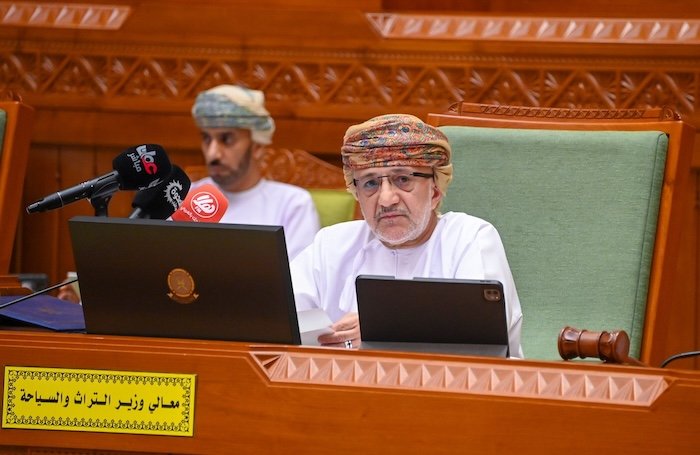Monday, March 24, 2025

The Minister of Heritage and Tourism of Oman has presented the Ministry’s latest plans to establish, develop, and rehabilitate several prominent tourist destinations across the country, aligning with royal directives. Key locations highlighted for development include Al Jabal Al Abyad, Wakan Village, Al Sharqiyah Sands, Wadi Al Shab, Bandar Al Khiran, Al Jabal Al Akhdar, Ras Al Hadd, Aftaqalut, and Sohar. The Ministry is also focusing on the improvement of surrounding neighbourhoods to enhance the overall visitor experience.
These plans were shared during the eighth regular session of the Shura Council, where the Minister addressed six crucial areas: policies, tourism development indicators, heritage and tourism sector management, human resources, and investment opportunities in the sector.
Positive Growth and Economic Contributions of Tourism
The Minister highlighted significant positive trends within the tourism sector, noting that tourism production has increased from OMR 1.8 billion in 2019 to OMR 2 billion in 2023. Similarly, the direct added value of tourism rose from OMR 873 million in 2019 to OMR 1 billion in 2023. With a target contribution of 3.5% to the GDP by 2030, tourism is projected to benefit from approximately OMR 3 billion in ongoing investments.
Domestic tourism has also seen substantial growth, with the number of visitors increasing from 10 million in 2019 to 13 million in 2023. Domestic tourism spending has similarly surged, rising from OMR 372 million in 2019 to OMR 830 million in 2023, reflecting the growing interest in local destinations.
Development of Oman’s World Heritage Sites and Museums
Efforts to develop Oman’s World Heritage sites are progressing, with visitor centers being constructed in Qalhat, Bat, and Dibba. Plans are also underway to add Bisya and Salut to the World Heritage List, further enhancing Oman’s standing on the global tourism map.
Oman is also making strides in museum development through integration programs. Notably, the Maritime History Museum in Sur is being revamped, and the Natural History Museum is being relocated to the Oman Botanical Gardens. Additionally, the Al-Hajar Geological Park project, which spans 5,400 square kilometers across three governorates, is progressing well, adding to the country’s unique cultural and natural heritage offerings.
Conclusion: Oman’s Vision for Sustainable Tourism Growth
With continued investment in key tourism infrastructure and heritage sites, Oman is positioning itself as a must-visit destination in the region. The Ministry’s strategic focus on tourism development promises to further boost the country’s tourism sector, contributing to long-term economic growth and enhancing Oman’s global reputation as a rich cultural and natural destination.

